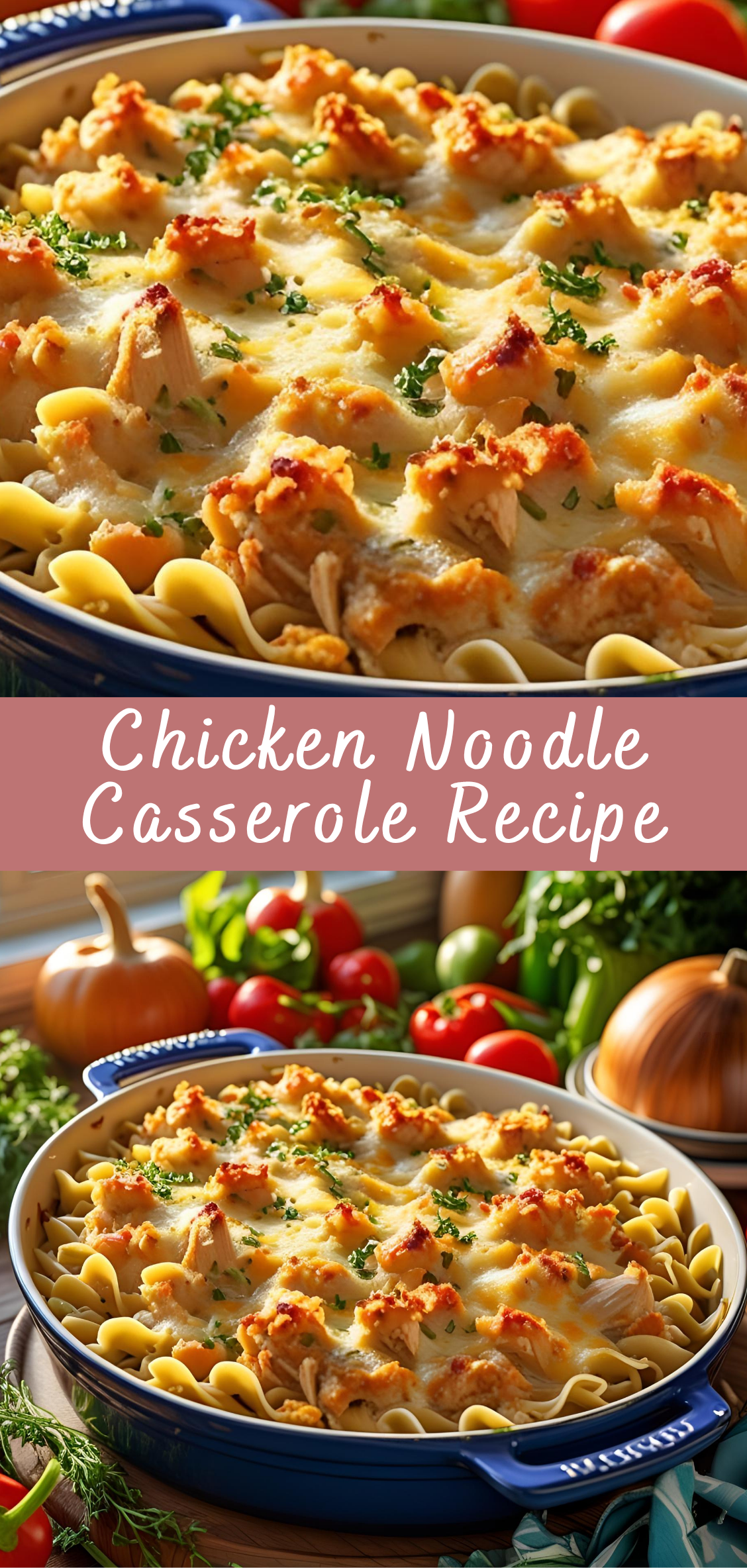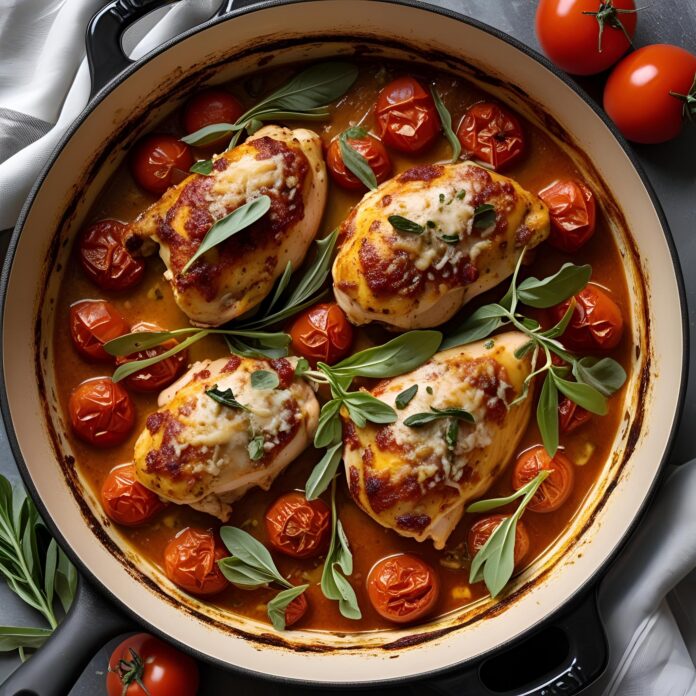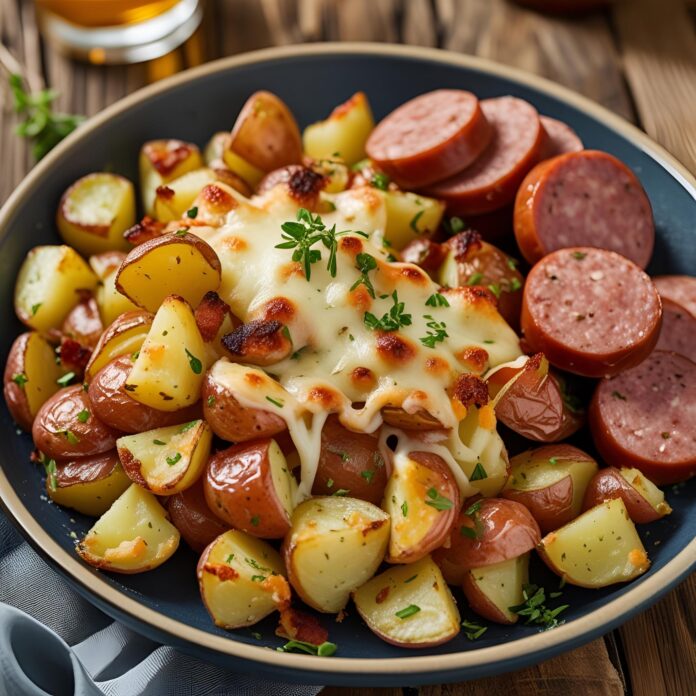Chicken Noodle Casserole Recipe
Comfort food has a unique way of transcending culinary trends, cultural boundaries, and even generations. Among the pantheon of such dishes, few are as universally cherished as chicken noodle casserole. This classic meal has warmed countless family tables, found its way into potlucks, comforted the sick, and served as the ultimate go-to dish during busy weekdays. Rich in flavor, modest in ingredients, and endlessly adaptable, chicken noodle casserole is far more than a convenient one-dish meal—it’s a nostalgic experience, a taste of home, and often, a reflection of family traditions passed down over time.

The origins of casseroles trace back to ancient times, where layered meals baked in a single vessel were a practical way to feed large families. However, the modern casserole as we know it gained popularity in mid-20th century America, particularly after World War II. With the rise of canned soups and mass-produced pantry staples, dishes like tuna noodle and chicken noodle casseroles became kitchen mainstays, especially among home cooks looking for quick, satisfying, and affordable meals.
Chicken noodle casserole, specifically, rose to prominence due to its use of common ingredients: egg noodles, chicken (often leftover or rotisserie for convenience), vegetables, and a creamy binder such as a can of condensed soup or homemade béchamel. What made this dish stand out was its ability to transform simple components into a hearty, soul-satisfying meal that could feed an entire family and still yield leftovers. It was the ultimate embodiment of resourcefulness and culinary ingenuity.
But beyond its humble beginnings and utilitarian appeal lies the deeper reason for its popularity—its ability to comfort. There is something inherently soothing about the tender bite of egg noodles mingled with savory chicken and rich sauce, all enveloped in a warm, golden crust of breadcrumbs or melted cheese. Whether enjoyed fresh from the oven on a chilly evening or reheated the next day, chicken noodle casserole offers consistency and reassurance in a world that often feels anything but.
For many, this dish serves as a rite of passage in learning how to cook. Its forgiving nature makes it ideal for novice cooks, while its versatility ensures that even seasoned chefs find room for creativity. You can make it with fresh herbs from your garden or spice it up with bold seasonings. It can be made gluten-free, dairy-free, or adapted for any dietary need. Add in mushrooms, peas, carrots, or even sun-dried tomatoes, and it becomes uniquely yours. Despite its wide potential for variation, the heart of the casserole—its comforting essence—remains intact.
In this extended exploration, we will delve deeply into the world of chicken noodle casserole. From its rich history and nutritional breakdown to detailed, step-by-step cooking instructions and innovative variations, this guide is designed to equip you with everything you need to know to master the dish. Whether you’re cooking for a family of five, preparing a make-ahead meal for the week, or simply looking to recreate a childhood favorite, this article will serve as both a practical guide and a culinary tribute to one of the most beloved casseroles in American kitchens.
Historical and Cultural Background of Chicken Noodle Casserole
The journey of chicken noodle casserole from a simple, utilitarian dish to a beloved household classic is rooted in broader historical and cultural developments. To fully appreciate the dish, it’s important to understand the factors that shaped its evolution, from early food preservation techniques to mid-century convenience cooking and beyond.
Casseroles in Early Culinary Traditions
The word “casserole” comes from the French word for “saucepan” or “cooking pot.” This style of cooking—assembling ingredients in a single vessel and baking until the flavors meld—is hardly a new concept. Ancient cultures, including the Greeks and Romans, often prepared layered dishes combining grains, meat, and vegetables. These early precursors of the casserole capitalized on the principle of slow, even cooking to tenderize tougher cuts of meat and make the most of available ingredients.
In medieval Europe, similar preparations were found in rustic pies or stews that could feed entire families. The idea of combining leftovers with starches and cooking them into a hearty meal was a matter of practicality. The vessel—be it ceramic, cast iron, or earthenware—allowed for even heat distribution, ensuring everything was cooked through and developed rich, concentrated flavors.
The Rise of the American Casserole
Fast forward to the early 20th century in the United States, and the casserole began to take on a new identity. Innovations in kitchen appliances and changing domestic roles meant that more families were cooking at home with modern conveniences. The Great Depression in the 1930s, followed by wartime rationing in the 1940s, forced home cooks to stretch ingredients creatively. The casserole became a symbol of frugality and resilience, offering sustenance in difficult times.
It wasn’t until the post–World War II era, however, that the casserole exploded in popularity. The 1950s and 60s saw a boom in processed and packaged foods. Canned soups, frozen vegetables, pre-cooked meats, and boxed pasta became readily available in supermarkets. Home economics magazines and cookbooks promoted casseroles as ideal meals for busy homemakers. Chicken noodle casserole, often made with condensed cream of mushroom or chicken soup, epitomized this new era of convenience cooking.
Brands like Campbell’s played a pivotal role in promoting casseroles. Their recipe booklets were widely distributed and encouraged the use of their soups as a base for countless baked dishes. The “Cream of Something” soup became shorthand for a creamy, rich casserole sauce, and households across America embraced the method. Chicken noodle casserole, with its inexpensive, easy-to-source ingredients, fit seamlessly into this framework.
The Role of Leftovers and Accessibility
Another reason for the dish’s success lies in its adaptability. Traditionally, casseroles were a way to repurpose leftovers. Roast chicken from Sunday dinner could become the star protein of a weekday casserole. Egg noodles, one of the most common pasta types in mid-century American pantries, provided an affordable and satisfying base.
Moreover, chicken noodle casserole became popular in part because it was accessible. There were no exotic ingredients or expensive cuts of meat. Even families with modest means could create a filling meal that tasted indulgent. The ingredients required minimal prep and could be assembled in minutes, then baked while other household chores were attended to.
Cultural Significance and Emotional Ties
There is a deeply emotional component to chicken noodle casserole’s enduring presence. More than just a dish, it is often a memory. For many, it’s associated with childhood dinners, family gatherings, church potlucks, or being cared for during a bout of illness. Its warmth, both literal and metaphorical, offers comfort and reassurance.
In American popular culture, casseroles have also served as a metaphor for community and connection. Bringing a casserole to a neighbor in mourning, to a friend recovering from surgery, or to a family who just welcomed a baby is an unspoken language of kindness. Chicken noodle casserole, with its soothing texture and universally appealing flavor, is frequently chosen for these moments.
Global Interpretations and Similar Dishes
Though quintessentially American in its modern form, the concept of a chicken-and-noodle bake is not unique to the United States. Various cultures have their own takes on baked or layered dishes featuring poultry and starches:
-
In France, the term “gratin” refers to baked dishes with a browned crust, often involving cream, cheese, and pasta or vegetables. While more refined, the spirit of the dish is similar.
-
In Italy, baked pasta dishes like pasta al forno or lasagna combine meat, pasta, sauce, and cheese in layered constructions.
-
In Russia, kasha or noodle casseroles made with sour cream and chicken are common.
-
In the Middle East, chicken and noodle dishes might be prepared with rice, cinnamon, nuts, and raisins—spiced and aromatic rather than creamy.
Each variation reflects local flavors, available ingredients, and culinary traditions. What ties them together is the principle of combining simple elements to create a harmonious, nourishing, and complete meal.
Modern Revivals and Culinary Reimaginings
In recent years, there’s been a resurgence of interest in classic comfort foods, often with a contemporary twist. Chefs and home cooks alike have revisited dishes like chicken noodle casserole, reimagining them with artisanal ingredients, gluten-free pasta, house-made stock, or dairy-free sauces. While the essence of the dish remains unchanged—warmth, nourishment, and familiarity—the methods and ingredients may vary.
Health-conscious adaptations have emerged, replacing condensed soups with homemade sauces made from Greek yogurt, cashew cream, or puréed vegetables. Some versions incorporate kale or spinach for added nutrition, while others switch the noodles for whole grains or legumes to increase fiber content.
Despite these changes, the enduring popularity of chicken noodle casserole points to a deeper truth: it’s not just about what’s in the pan, but about the memories and emotions it stirs. This is a dish that lives in recipe boxes, scribbled in handwriting passed down through generations. It’s a fixture at family reunions, holiday buffets, and weeknight dinners. It’s a constant in an ever-changing culinary landscape.
Chicken Noodle Casserole Recipe
Comfort food has a unique way of transcending culinary trends, cultural boundaries, and even generations. Among the pantheon of such dishes, few are as universally cherished as chicken noodle casserole. This classic meal has warmed countless family tables, found its way into potlucks, comforted the sick, and served as the ultimate go-to dish during busy weekdays. Rich in flavor, modest in ingredients, and endlessly adaptable, chicken noodle casserole is far more than a convenient one-dish meal—it’s a nostalgic experience, a taste of home, and often, a reflection of family traditions passed down over time.
Ingredients
- 12 oz egg noodles
- 2 cups cooked chicken (shredded or cubed)
- 1 cup frozen peas and carrots (or mixed vegetables)
- 1 can (10.5 oz) cream of mushroom soup
- 1 can (10.5 oz) cream of chicken soup
- 1 cup sour cream
- 1 cup shredded cheddar cheese
- ½ cup milk
- 1 tsp garlic powder
- Salt and pepper to taste
- ½ cup crushed Ritz crackers or breadcrumbs (for topping)
- 2 tbsp melted butter (for topping)
Instructions
- Preheat oven to 350°F (175°C). Grease a 9x13-inch baking dish.
- Cook noodles according to package directions. Drain and set aside.
- In a large bowl, combine soups, sour cream, milk, garlic powder, salt, and pepper.
- Stir in chicken, vegetables, and cooked noodles until fully coated.
- Transfer mixture to the prepared baking dish. Sprinkle cheese evenly on top.
- In a small bowl, mix melted butter with crushed crackers or breadcrumbs. Sprinkle over the casserole.
- Bake uncovered for 25–30 minutes, until heated through and topping is golden brown.
Notes
- Substitute rotisserie chicken for a quick prep shortcut.
- Add sautéed onions or mushrooms for extra flavor.
- Use Greek yogurt instead of sour cream for a lighter option.
- Can be assembled ahead and refrigerated for up to 24 hours before baking.
- Freezes well—just thaw overnight in the fridge before baking.



